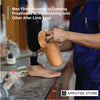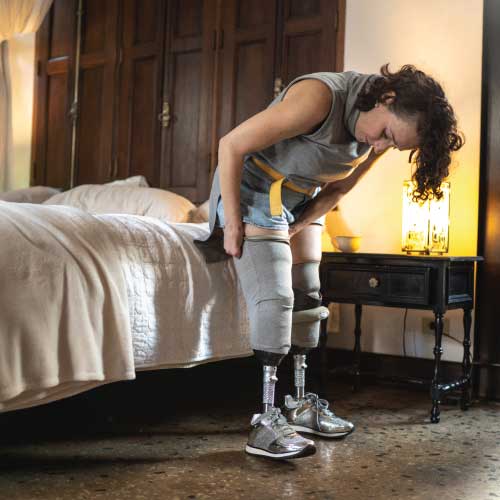Over 5.6M People Live with Limb Loss and Limb Difference in the US—study
Over 5.6 million people in the United States live with limb loss and limb difference. Of this number, almost 2.3 million individuals have limb loss, and 3.4 million have limb difference. These estimates are from a white paper titled “Prevalence of Limb Loss and Limb Difference in the United States: Implications for Public Policy,” which was published in February 2024, just in time for this year’s Limb Loss and Limb Difference Awareness Month.

This new study, commissioned by the Amputee Coalition in partnership with Avalere Health, a US-based healthcare consulting firm, shows that the number of people living with limb loss and limb difference in the US has been underestimated. The figures remained unchanged for years at around 2.1 million, but the new study reveals that the actual number is closer to 5.6 million.
It's worth noting, however, that this increase is not just due to a rise in the number of amputations. Previous research didn’t include people with limb differences, which are distinct from limb loss. While there are similarities between the two, it’s important to recognize that they are different conditions.
Limb difference vs. Limb loss
Limb difference is a congenital condition in which a limb may differ in structure, size, or shape. By this definition, a person born with a limb difference is not considered an amputee as they have not undergone amputation surgery or lost a limb.
It’s important to understand that the limb loss population in the US has not doubled overnight. Instead, the new study included individuals with limb differences to provide a more accurate count of everyone in the community. Surprisingly, the study found that individuals with limb differences outnumber those with limb loss. This is the first time ever that such a study has been conducted, and it sheds light on an important aspect of the limb loss and limb difference community.
Limb loss: 3.6 million by 2050
The new study also highlighted that the estimated number of individuals with limb loss in the US has reached 2.3 million, which is in line with the findings of a 2008 survey titled “Estimating the Prevalence of Limb Loss in the United States: 2005 to 2050.” This study predicted that the number of people with limb loss would double and reach over 3.6 million by 2050 if potent strategies for prevention, early intervention, and comprehensive care are not developed to reduce the number of preventable amputations. Therefore, it is crucial to focus on developing such strategies to ensure better care and support for those at risk of limb loss.
Furthermore, it’s concerning but not surprising to learn that more than half of the individuals with limb loss had a history of diabetes before their amputation. The 2024 study also found that the other most common diagnoses were infection, vascular conditions, and ulcers.
Although the researchers couldn’t definitively conclude that these health conditions caused the amputations, it’s widely understood that diabetes is a leading cause of amputation. It’s important not to ignore this fact and to continue researching and addressing the underlying causes of limb loss.
Limitations of the study
However, it’s important to emphasize that the new study only used datasets from Medicare claims and a bulk of data from all managed Medicaid, commercial, and Medicare advantage claims between 2016 and 2021. This study did not include any data about uninsured individuals or military members covered by the Veterans Affairs (VA) or TRICARE.
However, despite these limitations, this study is currently the most up-to-date and precise estimate available for this population. The study was conducted to fill the gap in knowledge about the predominance of limb loss and limb difference in the US population.
According to Ashley White, Chief Strategy and Programs Officer at the Amputee Coalition, this new information highlights the need for more support and education for members of the community and those at risk of amputation.











































































